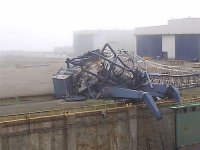FSTO
Army.ca Fixture
- Reaction score
- 6,356
- Points
- 1,210
Our office is discussing this article today. Here is my reply to one of our gang talking about "room for growth"
Quote “Considering we plan for ships to have a 30 year service life but then go on to drive them for half a century”
This is an unsustainable policy. You’d think that since we have spent all this money initiating the National Shipbuilding Strategy (or whatever its called now) that we’d plan for a 25-30 year lifecycle and forego the major refit at 20 years and just sell the bloody things and build new?
Anyone remember that place we poured billions into in the 80’s? Are we going to do that again?

I’ll just shut up now, and go back to grumbling.
Quote “Considering we plan for ships to have a 30 year service life but then go on to drive them for half a century”
This is an unsustainable policy. You’d think that since we have spent all this money initiating the National Shipbuilding Strategy (or whatever its called now) that we’d plan for a 25-30 year lifecycle and forego the major refit at 20 years and just sell the bloody things and build new?
Anyone remember that place we poured billions into in the 80’s? Are we going to do that again?

I’ll just shut up now, and go back to grumbling.


